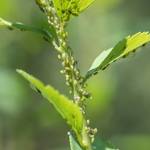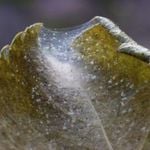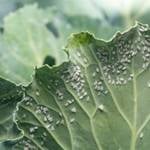
How to Grow Bergamot Seeds
Grow Guide #2389
Family: Lamiaceae
Binomial name: Monarda sp.
Life Cycle: Annual or Perennial
This 'How to Grow' guide details everything a home gardener needs to know to plant, grow and care for Bergamot (Monarda sp.).
Wild bergamot (Monarda fistulosa) is a perennial herb native to north America. There are several other species of Monarda that are also perennial. Lemon bergamot (Monarda citriodora) is a warm season annual herb. This guide applies to both annual and perennial varieties of bergamot.
When to Sow Bergamot Seeds
Use the table below to identify the best time of year to sow bergamot seeds in your climate.
| JAN | FEB | MAR | APR | MAY | JUN | JUL | AUG | SEP | OCT | NOV | DEC | |
|---|---|---|---|---|---|---|---|---|---|---|---|---|
| Cool | ||||||||||||
| Temperate | ||||||||||||
| Sub-Tropical | ||||||||||||
| Tropical | ||||||||||||
| Arid |
Preparation
Some bergamot plants are perennial, meaning they live for several years. If you are growing a perennial variety, choose a permanent position where plants can grow undisturbed by regular digging or disturbance.
Bergamot plants are best grown in full sun or part shade. Choose a location that will receive at least 3 hours of full sun each day.
Bergamot plants need a well drained soil enriched with plenty of organic matter. Prepare soil by weeding it thoroughly, digging it over to loosen it and adding aged animal manure or compost. Keep the area free of weeds until planting. Learn more about preparing soil for planting here.
Bergamot plants can be grown in containers. If possible choose a variety that’s recommended for container growing. Use a good quality potting mix and make sure your container is large enough for mature plants; a minimum of 20 litres is recommended for bergamot. During the growing season, keep in mind that container grown plants may need additional fertiliser to encourage healthy growth.
How to Sow Bergamot Seeds
Bergamot seeds do not require any treatment (eg soaking, stratification) before sowing.
Bergamot seeds grow best when they are raised in trays or other containers and transplanted to the garden once established.
- Fill trays, punnets or jiffy pots with a good quality seed-raising mix, or use soil starter pellets.
- Sow seeds 1mm deep.
- Keep soil moist but never wet or dry.
- Seeds should germinate in around 7-14 days at a soil temperature of 16-21°C.
- Transplant seedlings to the garden once they have their first true leaves and are large enough to handle (usually 5-10cm tall).
- Plant out, spacing plants 30-45cm apart.
Optional: In cool climates bergamot seeds can be sown indoors 6 weeks before the last expected frost. Grow them in a warm position with plenty of natural light.
How to Grow Bergamot
Bergamot plants may need watering during the growing season. Water when the soil is dry about 5cm below the surface (test this by scratching away a little soil with your finger). Water deeply in the early morning or late afternoon. Avoid watering the leaves of plants to avoid fungal diseases. Learn more about watering here.
If soil was well prepared no extra fertiliser should be necessary. In poor soil or to give your plants an extra boost, application of a balanced fertiliser or one formulated for fruit and vegetables can be beneficial:
- Apply slow release fertiliser at the recommended rate when transplanting or when seedlings are 5-10cm tall.
- Apply liquid fertiliser at the recommended rate and frequency while plants are fruiting or flowering.
Perennial varieties only - When plants have finished flowering prune them back to neaten them and encourage strong new growth. Using sharp secateurs or snips, cut individual stems just above a set of lower leaves.
How to Harvest Bergamot
Bergamot should be ready to harvest in approximately 365 days.
Bergamot is ready to harvest when the stems have grown long enough to pick, and can be harvested as needed. Harvest by pinching off the outer stems and leaves, leaving some on the plant for future growth. Stems or individual leaves can be used shortly after picking or can be dried for use in herbal tea.
Common Problems when Growing Bergamot
Like all plants, bergamot is susceptible to some pests, diseases and other problems. Below is a list of the most common problems gardeners encounter when growing bergamot plants:
 Aphids are small (2-4mm long) sap-sucking insects that congregate on the new shoots or the undersides of leaves. They can cause leaves to wilt or become discoloured, and also excrete honeydew which can attract ants and other insect pests. To manage aphids, remove them by spraying with a garden hose, apply a soap or alcohol spray, or encourage predatory insects to your garden. Read more about aphids here.
Aphids are small (2-4mm long) sap-sucking insects that congregate on the new shoots or the undersides of leaves. They can cause leaves to wilt or become discoloured, and also excrete honeydew which can attract ants and other insect pests. To manage aphids, remove them by spraying with a garden hose, apply a soap or alcohol spray, or encourage predatory insects to your garden. Read more about aphids here. Slugs and snails are molluscs that feed on tender leaves and shoots, mostly at night, leaving slimy trails behind them. Control them by removing their hiding places, keeping free range poultry, collecting them by torchlight or by placing traps. Read more about slugs and snails here.
Slugs and snails are molluscs that feed on tender leaves and shoots, mostly at night, leaving slimy trails behind them. Control them by removing their hiding places, keeping free range poultry, collecting them by torchlight or by placing traps. Read more about slugs and snails here. Spider mites (Tetranychus urticae), also known as two spotted mites, are sap-sucking arachnids that cause dry, wilted or discoloured leaves. The undersides of leaves may feel dry and a little like fine sandpaper. Prune plants to allow good air flow or spray with eco-oil or wettable sulphur. Learn more about managing spider mites here.
Spider mites (Tetranychus urticae), also known as two spotted mites, are sap-sucking arachnids that cause dry, wilted or discoloured leaves. The undersides of leaves may feel dry and a little like fine sandpaper. Prune plants to allow good air flow or spray with eco-oil or wettable sulphur. Learn more about managing spider mites here. Thrips are black, beige or white flying insects (<1.5mm) with larvae that suck tissue from leaves and petals, leaving behind very small white or transparent markings. While not usually causing serious damage, the marks affect the look of flowers and foliage and thrips can also transfer pathogens from one plant to another. Wash thrips from affected plants using a garden hose, encourage predatory mites and lacewings with companion planting, or spray with soap, eco-oil or neem oil.
Thrips are black, beige or white flying insects (<1.5mm) with larvae that suck tissue from leaves and petals, leaving behind very small white or transparent markings. While not usually causing serious damage, the marks affect the look of flowers and foliage and thrips can also transfer pathogens from one plant to another. Wash thrips from affected plants using a garden hose, encourage predatory mites and lacewings with companion planting, or spray with soap, eco-oil or neem oil. Whitefly is a sap-sucking insect related to aphids. They are often found in large numbers on the underside of leaves and will swarm in clouds when disturbed. Plants may have yellowing leaves or may wilt, and growth will be slowed. Whitefly can be removed with a garden hose or sprayed with soap spray. Badly affected plants should be destroyed. Attracting beneficial insects that will prey on whitefly can be beneficial. Read more about managing whitefly here.
Whitefly is a sap-sucking insect related to aphids. They are often found in large numbers on the underside of leaves and will swarm in clouds when disturbed. Plants may have yellowing leaves or may wilt, and growth will be slowed. Whitefly can be removed with a garden hose or sprayed with soap spray. Badly affected plants should be destroyed. Attracting beneficial insects that will prey on whitefly can be beneficial. Read more about managing whitefly here.


.png)




